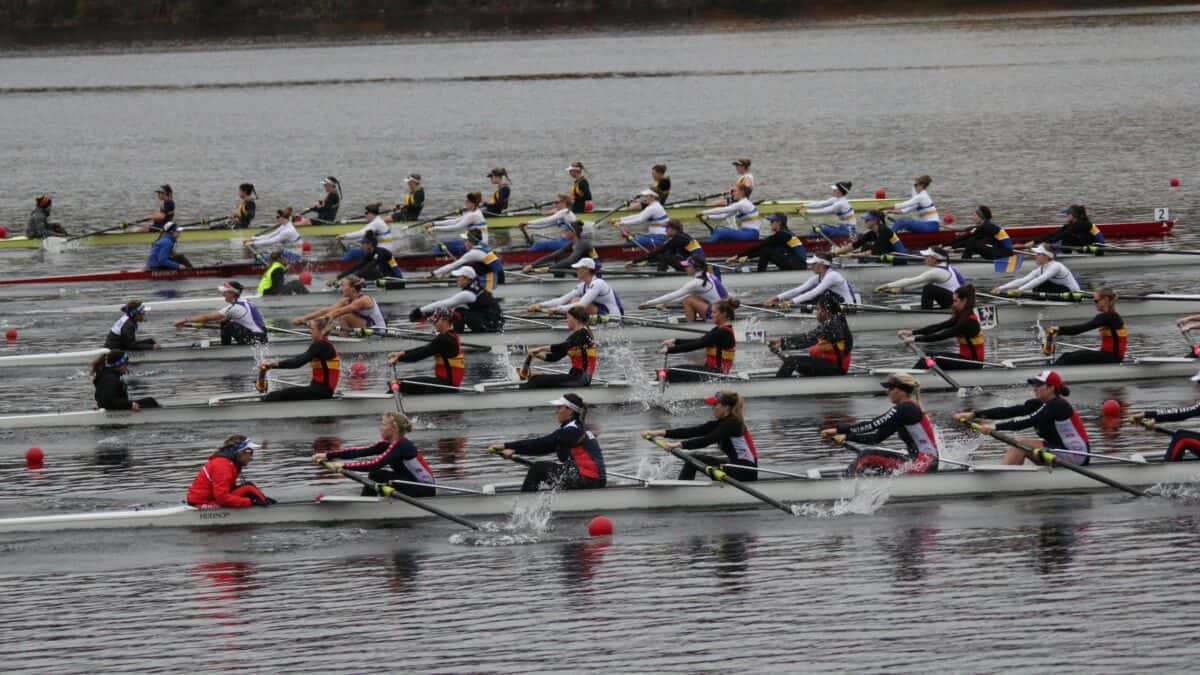
10 Aug 2017
University rowing the Canadian way
As a nation of lakes and rivers, there is little wonder that Canadians see rowing as one of their premier Olympic sports. While the sport of rowing had its beginning long before the birth of modern Canada in 1867, the year 2017 – Canada’s 150th anniversary year – also marks a milestone for a specific group of rowers as student athletes across the country prepare to mark the 20th anniversary of the Canadian University Rowing Association.
Since its founding in 1997, the organisation’s main event, the Canadian University Rowing Championships, has run each autumn. This year’s competition is in November on Burnaby Lake, near Vancouver. There are a few hundred competitors thanks to a limited pool of between 25 to 30 institutions and an athlete cap of 12 men and 12 women (plus coxswains) per team.
“We are getting close to 400 athletes and 40 coaches per year,” says Craig Pond, Head Women’s Coach at the University of British Columbia, home to one of Canada’s top university rowing programmes and current president of the Canadian University Rowing Association (CURA).
CURA follows a unique regatta format where crews advance through an initial time trial for seeding into multiple finals the following day. This allows for a significant amount of racing. Men’s and women’s crews compete in open-weight singles, pairs and eights and lightweight singles, doubles and fours with many top athletes doubling up and sometimes tripling up.
“The Championships promote lightweight, heavyweight, sculling and sweep together in one event,” says Dan Bechard, who will begin his inaugural year as Head Men’s Coach of the University of Western Ontario, in the upcoming season.
“It is the pinnacle of competition in our league that brings together the best in our country,” says Bechard, who also serves as CURA’s media representative.
The focus on small and big boat competition seems to be a reflection of a general emphasis on development of multiple skillsets that Bechard and Pond agree improve the student-athlete experience as well as create more versatile rowers, an asset for rowers with national team aspirations.
“We have a high level of pride in promoting athletes to the international level,” says Bechard. “We are highly integrated with national and provincial governing bodies.”
This level of integration is important to Canadian universities as they traditionally compete with United States universities for the best high school rowers. “We offer something uniquely Canadian,” says Bechard, adding that around half of Canada’s international rowers have come through Canadian universities.
“This is a positive result we are committed to improving,” he states, “One hundred per cent of our World University Championships team over the past two years was Canadian university based.”
In fact, many of Canada’s national team rowers got their start in rowing at the university level, and, according to Craig, “this number is going up,” which reflects the growing popularity of the sport in Canada.
“Along with rugby, we are the only sport on (Canadian) campuses that offers a late entry pathway where you can reach the pinnacle of sport,” says Bechard.
“Last year the winning women’s eight at the university championships had eight girls that started rowing in university,” says Pond of his University of British Columbia crew. A number of Canada’s Olympians, including current single sculler Carling Zeeman and members of the Beijing 2008 gold medalist men’s eight, Ben Rutledge and Kyle Hamilton, took their first strokes as members of their respective university novice teams.
While the specific goals of individual university rowers and teams are as varied as the diverse regions of Canada itself, CURA’s unifying influence has provided a sense of common purpose to foster academic and rowing excellence, says Bechard.
“What binds us together are our shared values (to) support academic and athletic excellence; promote a student-athlete centred experience; uphold the values of fair play, integrity and respect; (and) fairly and equitably address the needs of CURA members, the institution representatives and the student-athletes,” says Bechard.
Of course, university rowing in Canada is far older than CURA’s short twenty-year existence, going back more than a century with CURA able to tap into the rich heritage.

